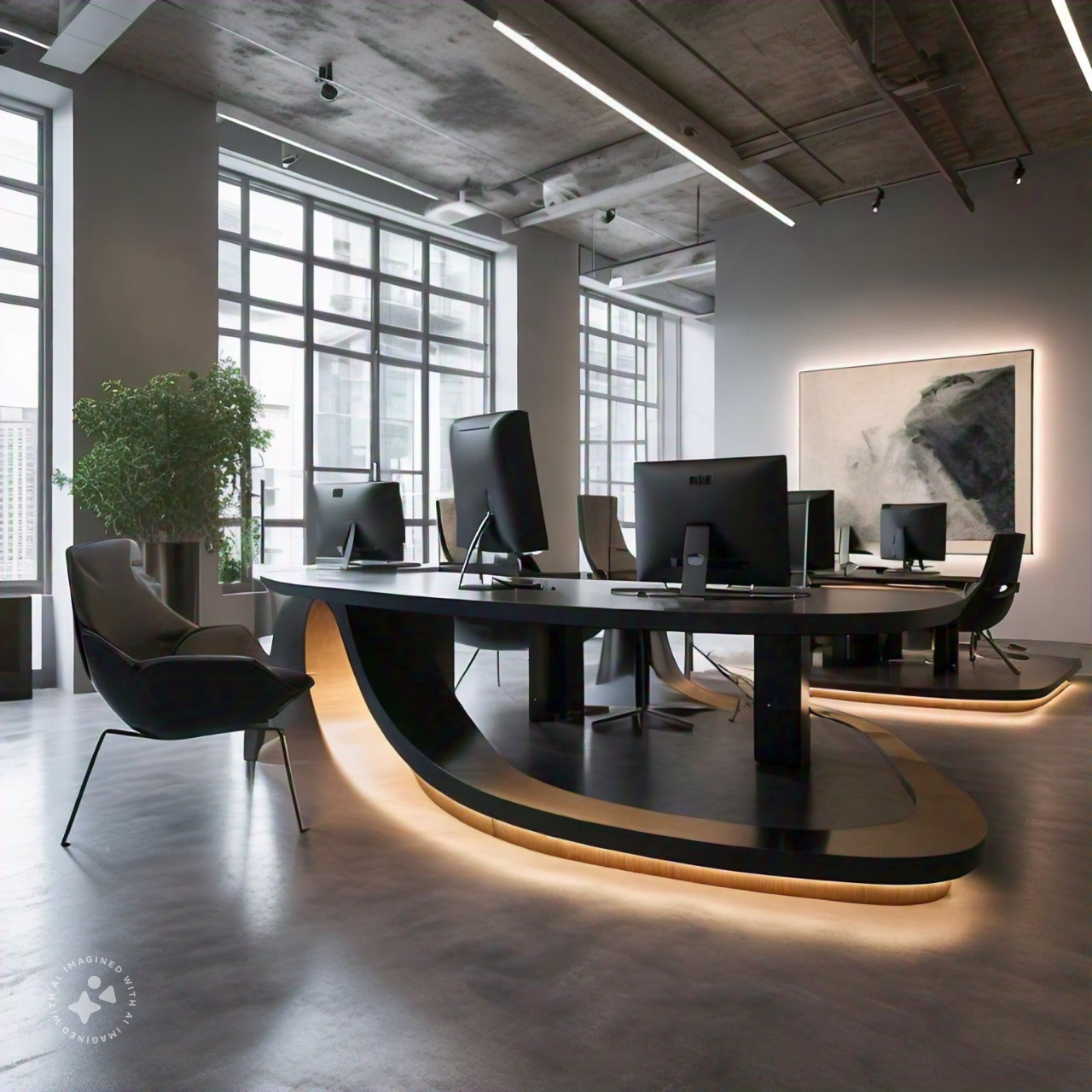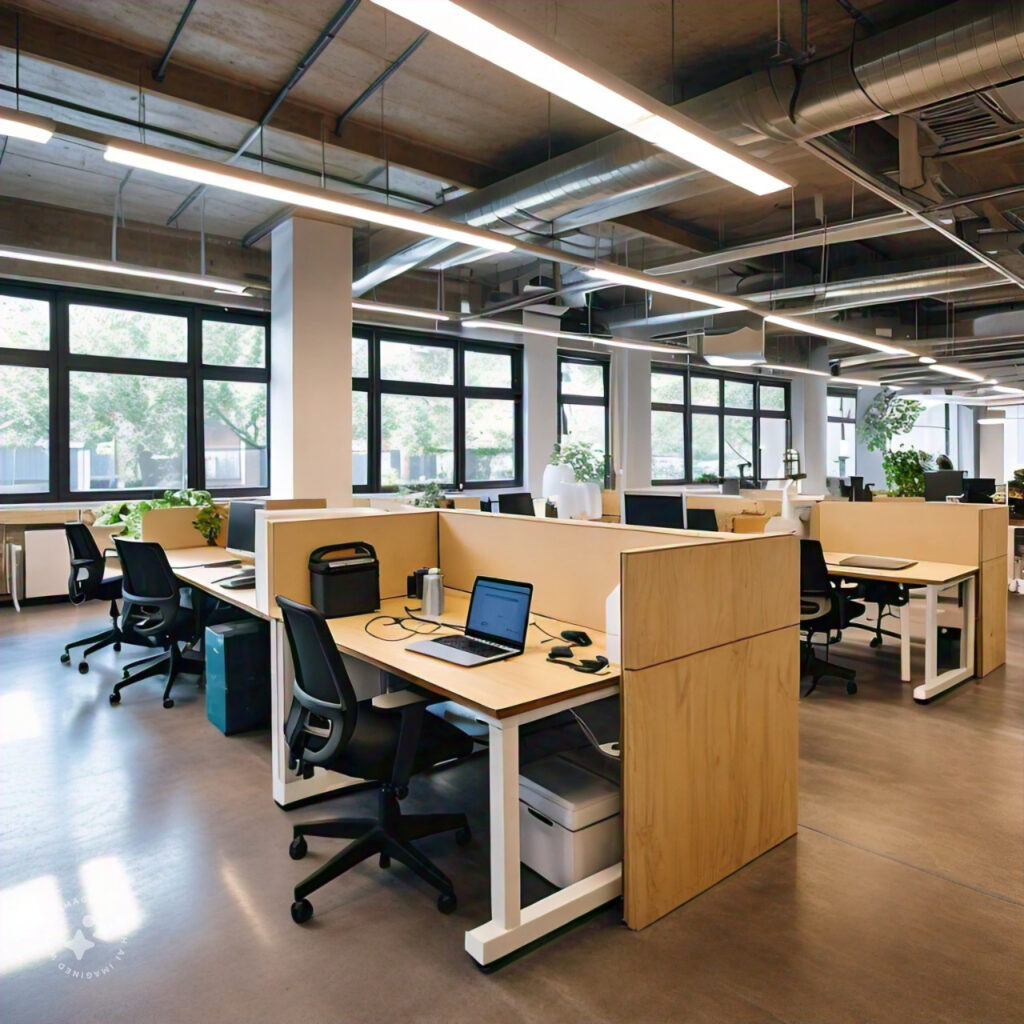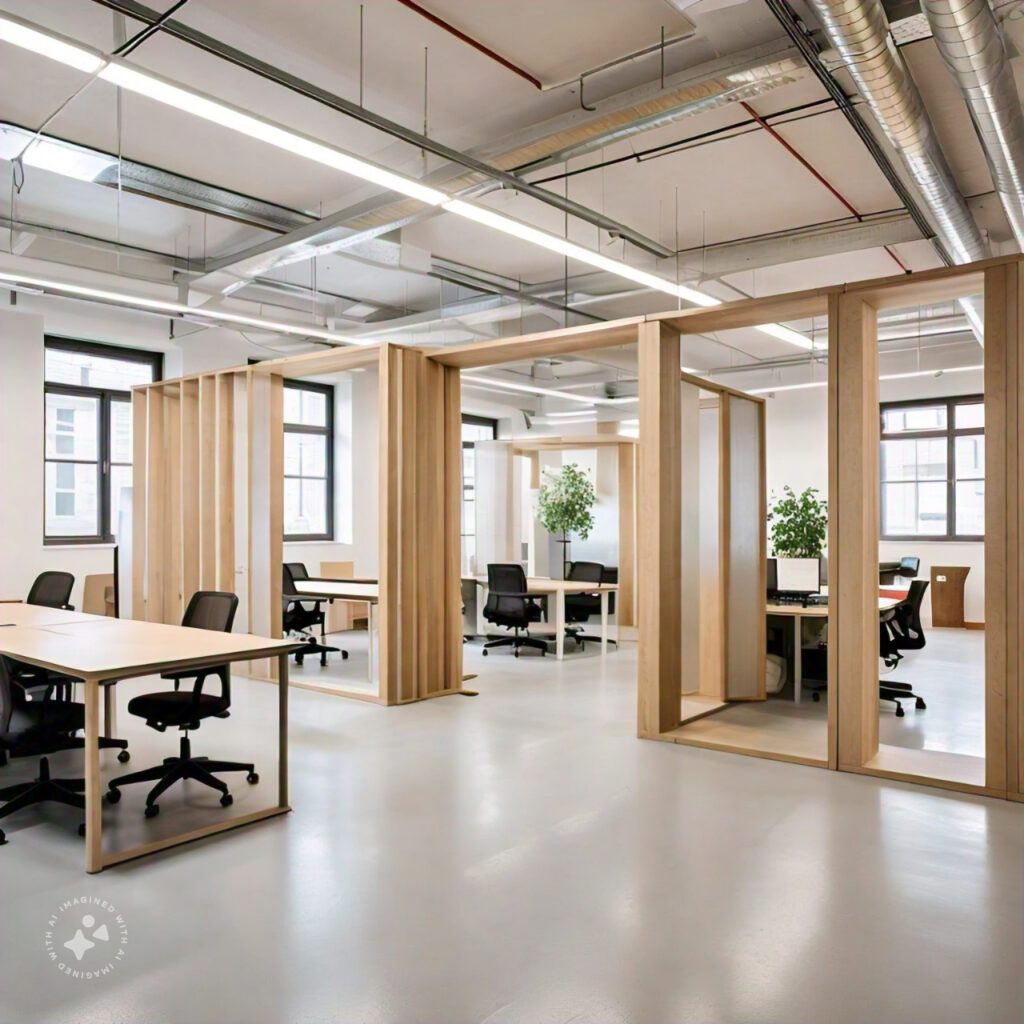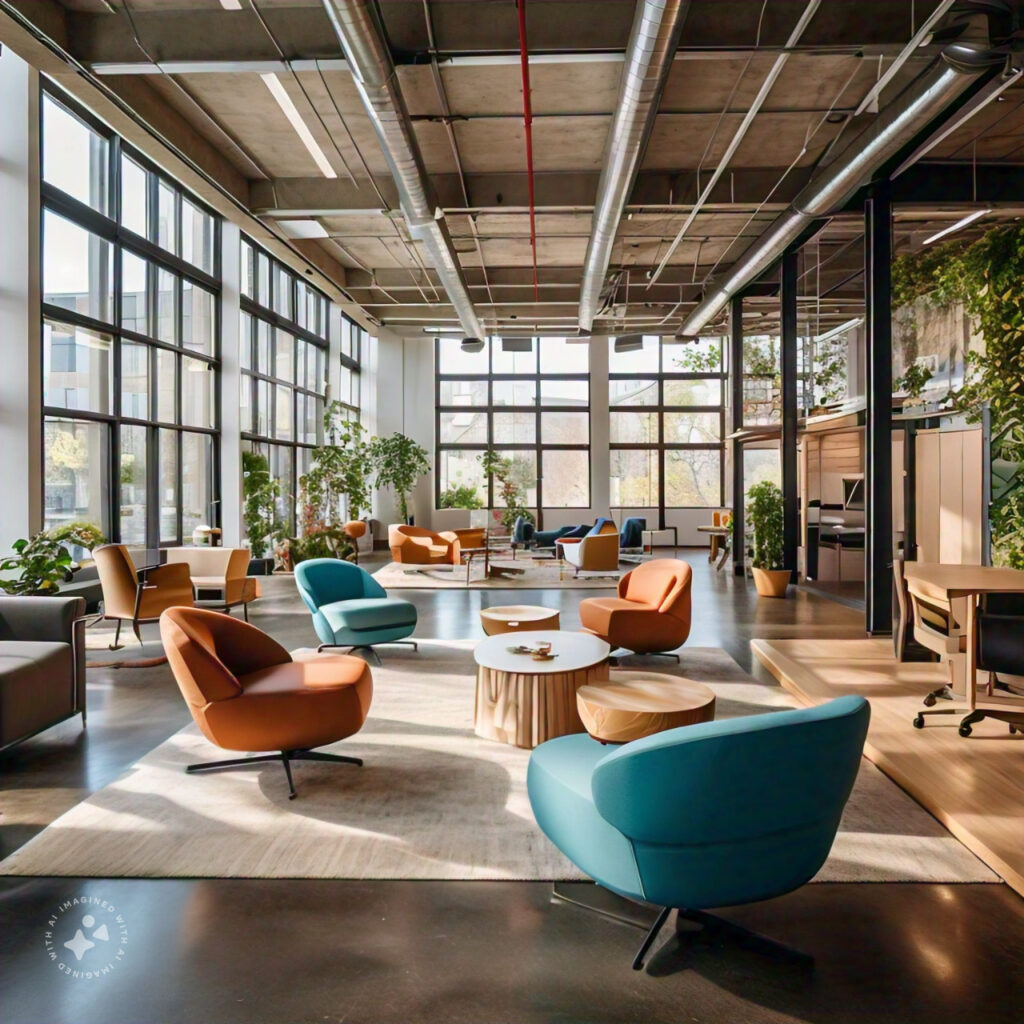
Innovative Modern Office Design Ideas for a Productive Workspace
Modern office design has ditched the funny cubicles and harsh lighting of the past. Today’s work environments are all about creating spaces that spark creativity, foster collaboration, and offer comfort. Whether you’re setting up a new office or giving your current space a facelift, these modern office design ideas will help you create a productive and stylish workspace that everyone will love.
The office is more than just a place to clock in and out—it’s a space where ideas come to life, where teamwork thrives, and where people spend a significant portion of their day. That’s why the design of an office plays such a crucial role in the productivity and happiness of its occupants.
Imagine walking into a workspace flooded with natural light, where open layouts invite spontaneous collaboration, and different zones cater to various working styles. Picture an environment where technology seamlessly integrates into everyday tasks, making work easier and more efficient. Think of an office that not only looks good but also feels good—a place that’s comfortable, ergonomic, and even eco-friendly.
This is the essence of modern office design. It’s about creating a workspace that’s as flexible as the people who use it, where form meets function, and where every detail is thoughtfully considered to enhance the work experience. Whether you’re starting from scratch or giving your current office a much-needed update, these innovative design ideas will help you create a workspace that’s not just productive, but truly enjoyable.
So, if you’re ready to transform your office into a space where your team can thrive, then allow me take you through some of the best modern office design ideas that will make your workspace the place to be.
Embrace Open Layouts for Flexibility and Collaboration

In today’s work environment, open layouts are more than just a design trend—they’re a strategic approach to fostering communication, collaboration, and creativity. By breaking down the physical barriers that once defined traditional office spaces, open layouts create a sense of community and openness that’s essential for modern work culture.
Why Open Layouts?
One of the biggest advantages of an open layout is its ability to encourage spontaneous interaction. When team members aren’t confined to cubicles or separated by walls, it’s easier to pop over to a colleague’s desk for a quick chat or brainstorm ideas on the fly. This level of accessibility can lead to faster decision-making, more dynamic teamwork, and a stronger sense of camaraderie among employees.
Flexibility is Key
Open layouts also offer unmatched flexibility. Unlike traditional offices, where the layout is often rigid and difficult to modify, an open space can be easily adapted to suit different needs. For instance, you can rearrange desks to accommodate new projects, set up temporary workstations for visiting team members, or create larger spaces for workshops and team meetings. This adaptability is crucial in a fast-paced work environment where priorities and team structures can change rapidly.
Promoting Transparency and Trust
Another benefit of open layouts is the transparency they bring to the workplace. Without physical barriers, there’s a natural flow of information and visibility across teams and departments. This openness can help build trust among employees, as everyone is more aware of what’s happening in the office. Leaders and managers are also more approachable in an open layout, fostering a culture of openness and collaboration.
Designing the Perfect Open Layout
While open layouts have many benefits, it’s important to design them thoughtfully to avoid common pitfalls like noise and distractions. Consider incorporating elements like low partitions, plants, or strategically placed furniture to create a sense of structure and privacy without closing off the space entirely. Acoustic solutions, such as sound-absorbing materials or designated quiet zones, can also help mitigate noise and keep the environment conducive to both focused work and collaboration.
Pro Tip: To make the most of an open layout, use flexible and modular furniture. Desks on wheels, movable partitions, and adjustable seating options allow you to reconfigure the space as needed, keeping it dynamic and responsive to the changing needs of your team.
Embracing an open layout, sets the stage for a more connected and productive team, where ideas can flow freely and innovation can thrive.
Let the Light In: Natural Light and Biophilic Design

Nothing lifts the mood and boosts productivity quite like natural light. It brightens up the workspace, improves focus, and even boosts overall health. When it comes to modern office design, maximizing natural light is a must.
And while you’re at it, why not bring a little nature inside? Biophilic design—using natural elements like plants and wood—can turn your office into a calming, stress-busting environment. Think of it as creating a mini oasis that makes work feel less like work.
Pro Tip: Position workstations near windows to make the most of natural light. If you’re short on windows, go for glass walls or partitions to spread that light around. Add some indoor plants or even a green wall to give the space a refreshing, natural vibe.
Create Zones That Match Your Work Style
Let’s face it—no one works the same way all the time. Some days you need a quiet corner to dive deep into a project, and other days you’re all about bouncing ideas off your team. That’s why having different zones in your office is a game-changer. It’s like giving your workspace multiple personalities—each one designed to support whatever you’re working on.
Need to focus? Quiet zones are your go-to. Picture cozy nooks or soundproof pods where you can escape the office buzz and get lost in your work. It’s like having a personal bubble of concentration, minus the distractions. Whether you’re tackling detailed tasks or hopping on a private call, these spaces make it easy to stay on top of your game.
Feeling collaborative? Head to the collaboration zone, where big tables, whiteboards, and screens await your team’s brainstorming sessions. It’s a space that sparks creativity and keeps the ideas flowing. With the right setup, you can turn any idea into a plan and any plan into action.
Pro Tip: Clearly define each zone with signage or distinct design elements, like different colors or types of furniture. This helps everyone quickly find the perfect spot for what they’re working on, making the office more efficient and user-friendly.
Make Tech Work for You—Not Against You
In a modern office, technology shouldn’t just be present; it should be your best friend. We’re talking about seamless, intuitive tech that makes your workday easier—not the kind that has you untangling cables or fiddling with buttons.
First off, let’s go wireless. Say goodbye to cluttered desks and hello to wireless charging stations and Wi-Fi that actually works. No more hunting for outlets or dealing with a mess of cords. Everything you need should be right at your fingertips.
Next up, smart everything. Imagine being able to control the office lighting, temperature, and even book meeting rooms from your phone. Smart office systems make this possible. They’re not just cool—they’re a practical way to boost comfort and efficiency. Whether you’re adjusting the lights for a presentation or tweaking the thermostat to get that perfect temperature, the tech should work for you, not the other way around.
So, embrace the tech that keeps your office running smoothly. It’s all about creating a workspace where everything just clicks.
Focus on Ergonomics for Comfort and Productivity

Ergonomics might sound like a fancy buzzword, but it’s crucial for a comfortable and productive work environment. The right furniture and equipment can prevent those pesky aches and pains, keeping you focused on your work instead of your sore back.
Ergonomic design includes adjustable desks that let you sit or stand, chairs that support good posture, and monitor setups that reduce strain. When your workspace is comfortable, you’ll find it easier to stay on task and get more done.
Pro Tip: Offer a variety of ergonomic options, like standing desks, kneeling chairs, and adjustable monitor arms. This lets everyone customize their workspace to fit their personal needs and preferences, keeping comfort at an all-time high.
Go Green: Sustainable and Eco-Friendly Design
Sustainability isn’t just a trend—it’s a smart way to design your office. By using eco-friendly materials and energy-efficient solutions, you’re not only helping the planet but also creating a healthier, more enjoyable workspace.
From recycled furniture to energy-saving lighting, there are plenty of ways to make your office more sustainable. And it’s not just about the big stuff—small changes, like adding recycling stations or reducing paper use, can make a big difference.
Pro Tip: Use reclaimed wood, recycled metal, and other sustainable materials in your office design. Opt for energy-efficient lighting and appliances to cut down on energy use. And don’t forget to highlight your green efforts with signage or a section on your website—it shows that you care about the environment, which resonates with employees and clients alike.
Encourage Personalization and Creativity
Your office should reflect the people who work there. Encouraging employees to personalize their spaces can make them feel more at home and boost their creativity. Whether it’s a plant, a piece of art, or a photo, letting people add their personal touch can make the office feel more vibrant and welcoming.
Creativity shouldn’t be limited to personal desks. Think about adding communal spaces where people can express themselves—whether through group projects, art installations, or even a chalkboard wall for doodles and ideas.
Pro Tip: Create a rotating display where employees can showcase their creative projects. It’s a fun way to build community and make the office environment more dynamic and inspiring.
Conclusion
Modern office design is all about creating a space where people can thrive. By embracing open layouts, prioritizing natural light, creating diverse work zones, integrating seamless technology, focusing on ergonomics, going green, and encouraging personalization, you can build a workspace that’s not only productive but also enjoyable.
A well-designed office isn’t just a place to work—it’s a place where ideas flourish, collaboration happens naturally, and everyone feels comfortable and inspired. So, take these tips and start transforming your office into a space that truly stands out.



